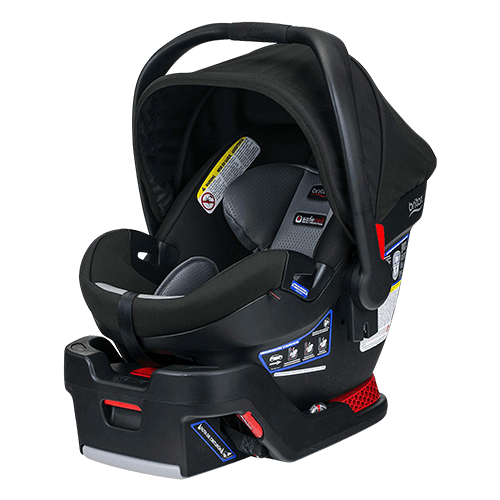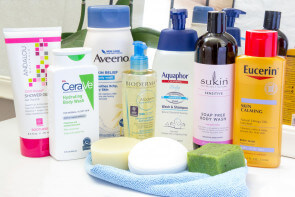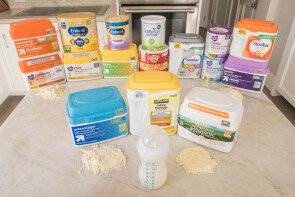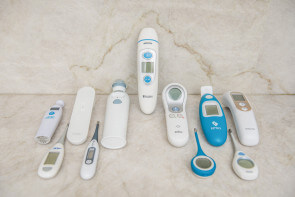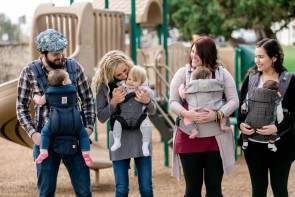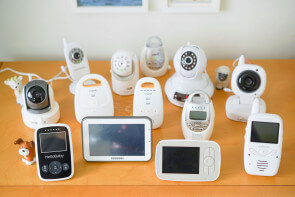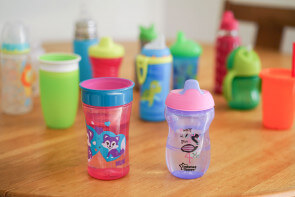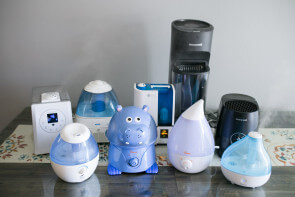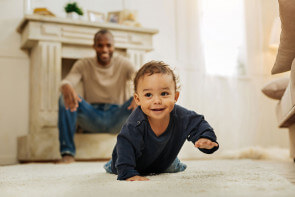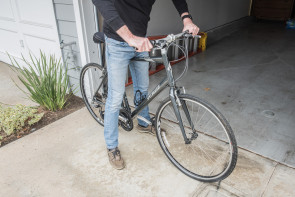
The Best Infant Car Seats
We took four top-rated car seats and asked six experienced parents to size them up. After two months of testing and a thorough debrief, our team picked the Britax – B-Safe Ultra as the best infant car seat. Easy-to-use installation and harness adjustment features make this a great seat to work with and you get extra installation flexibility with European-style shoulder belt routing. If you’re looking for advanced crash protection features, the Britax is no slouch, but we also like the compact Cybex – Aton2 for its extra features.
We took four top-rated car seats and asked six experienced parents to size them up. After two months of testing and a thorough debrief, our team picked the Britax – B-Safe Ultra as the best infant car seat. Easy-to-use installation and harness adjustment features make this a great seat to work with and you get extra installation flexibility with European-style shoulder belt routing. If you’re looking for advanced crash protection features, the Britax is no slouch, but we also like the compact Cybex – Aton2 for its extra features.
Table of contents
- How we selected finalists to test
- Compare the best infant car seats
- A word about crash tests
- How we tested
- Top pick: Britax – B-Safe Ultra
- Best for small cars: Cybex – Aton2
- Other finalists we tested
- The bottom line
How we selected finalists to test
Shopping for car seats can be a nightmare. The number of brands is staggering and they all seem to be offering different approaches to keep your baby safe.
We spent three weeks checking reviews from the top baby product test websites, like Wirecutter, Consumer Reports and BabyGearLab. Some of the models mentioned in those reviews have been replaced with new designs, so we talked to retail associates at two local BuyBuyBaby stores and looked at video coverage from baby product trade shows.
We honed in on the $200 price bracket as the best value. If you spend $180–230 you can get some premium features that trickle down from more expensive seats. Spending more than that doesn’t seem to get you more features than the Britax has, while the sacrifices you make at a lower price point are pretty big losses in convenience.
The features we prioritized when shopping were all related to daily use: adjusting the fit of the harness, moving the seat from one car to another, and using the seat “bucket” without its base (like you would in a taxi or Uber).
We compiled a list of 15 car seats and inspected them in-store before purchasing our test lineup. We also checked Amazon buyer reviews and looked for recall notices.
Compare the best infant car seats
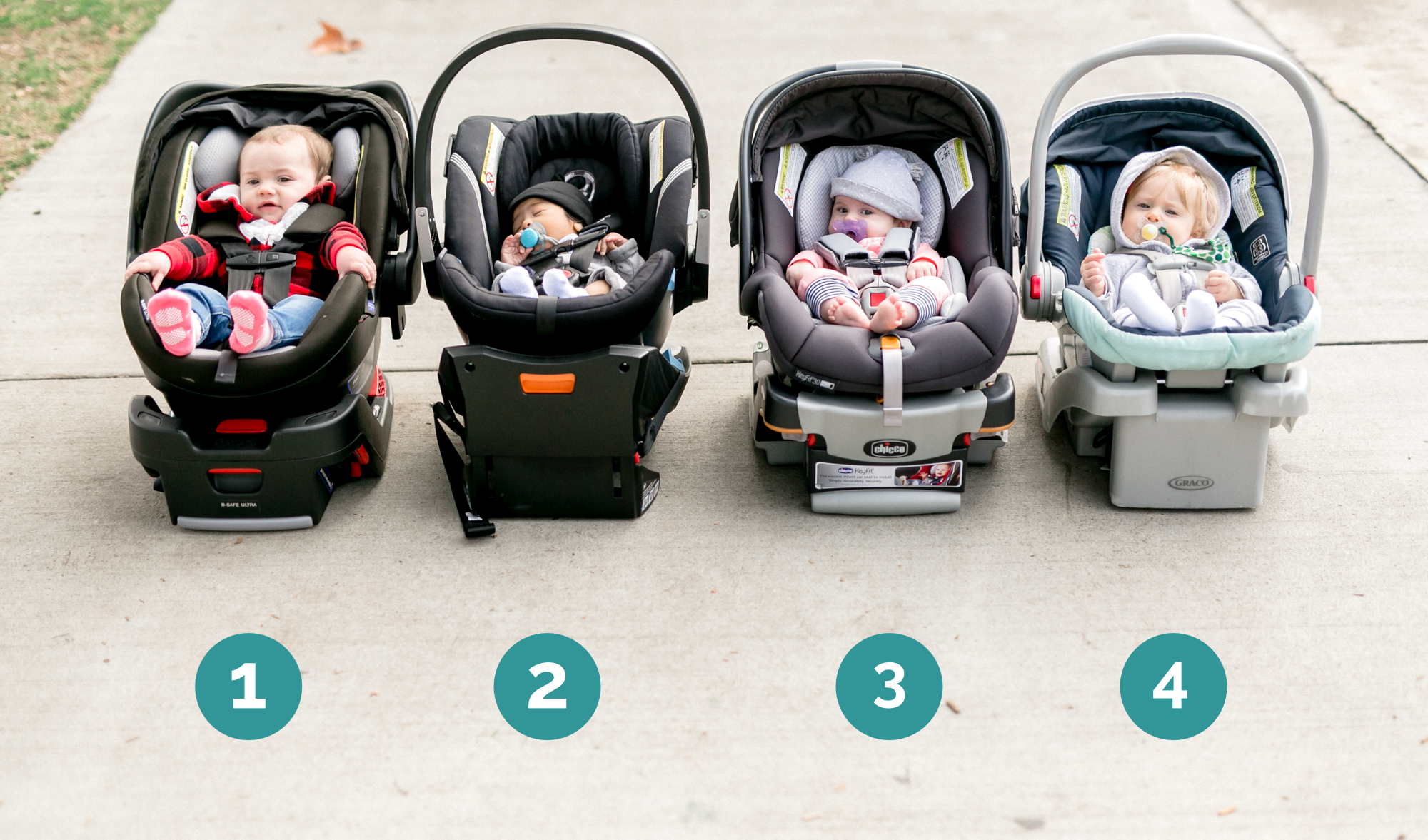
| Car Seat | Price | Features | Easy adjustment | Weight (Lbs) |
|---|---|---|---|---|
| 1. Britax - B-Safe Ultra | $$$ | ☆☆☆☆☆ | ☆☆☆☆☆ | 11.5 |
| 2. Cybex - Aton2 | $$$$ | ☆☆☆☆☆ | ☆☆☆ | 8.8 |
| 3. Chicco - Keyfit 30 Zip | $$$ | ☆☆☆ | ☆☆☆ | 10.25 |
| 4. Graco - Snuglock 30 | $$ | ☆ | ☆ | 7.5 |
Who needs an infant car seat?
Put simply, if you want to move a baby in a car, you need a purpose-built car seat. If you’ve done your planning for delivery day, you’ve probably already found out that hospitals and birth centers won’t let you take a baby home unless you have an approved infant car seat.
It’s good to plan ahead and make sure you buy and know how to install your car seat a few months before your due date. You don’t want to be caught off guard if baby arrives early!
There are two main qualifications for a seat that will protect a newborn. First, the car seat has to be rear-facing (and in the back seat). In a crash, the force of baby’s weight has to be spread out along the padded back of the seat, not just into the straps. Most states require rear-facing seats for the first two years, and many safety experts advise keeping your kids rear-facing for as long as possible. Given the number of drunk and distracted drivers on the road, your newborn deserves no less than the best.
Second, the seat has to recline quite low, but not too low. Official specs range from 35 to 40 degrees incline. Recline is necessary so a newborn’s head won’t just flop down onto their chest, but if it’s too low the momentum in a crash would just go into the shoulder straps instead of the back of the seat.
It’s possible to move your baby to a less-reclined seat once they have enough neck strength, but typically a baby won’t be able to sleep comfortably sitting up — most people keep the reclined position until their baby is too big for an infant car seat.
Important features to consider
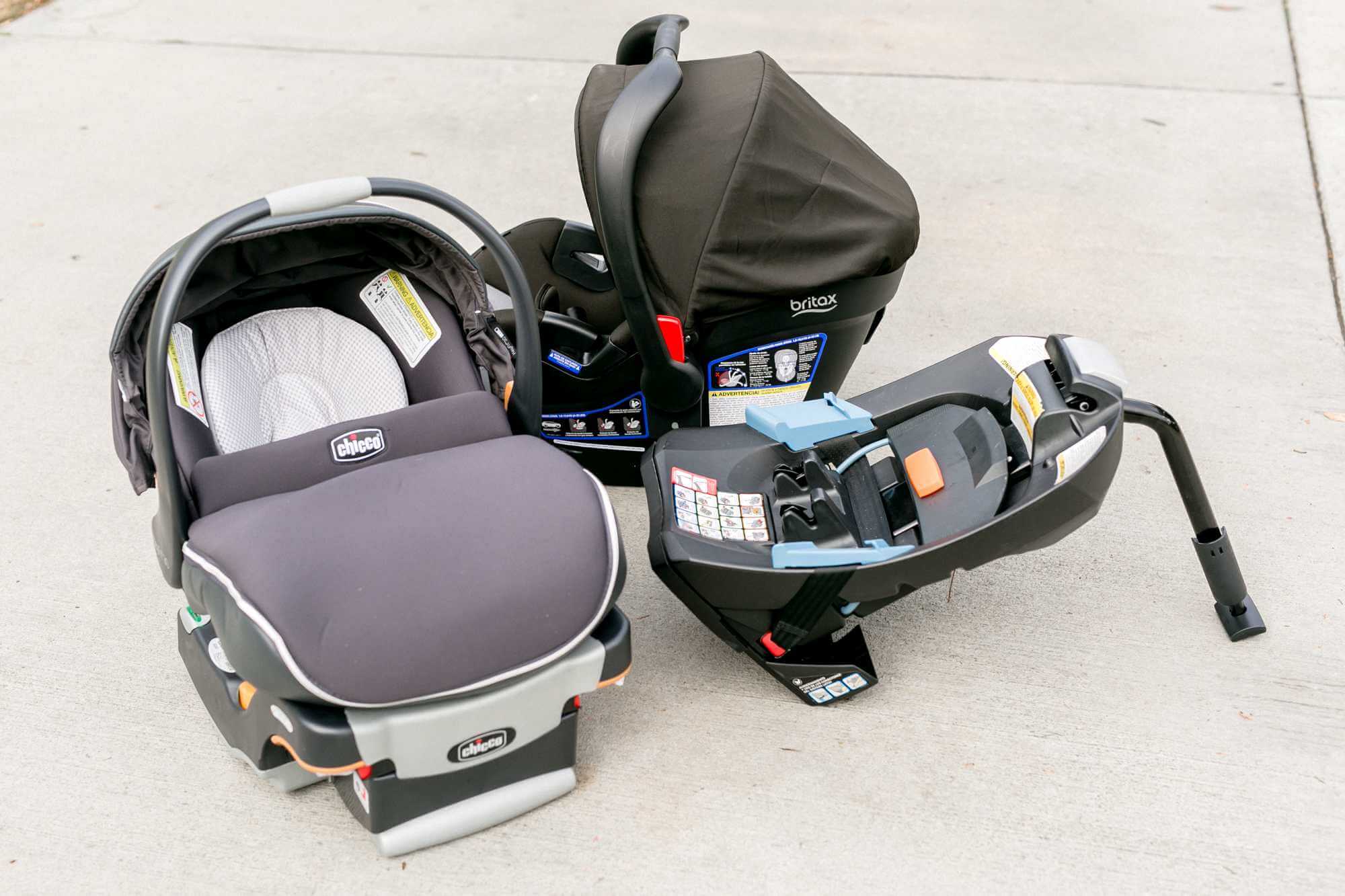
Extra crash-protection features: Most car seats will make claims about design considerations that specifically go above and beyond the baseline crash test performance allowed under federal regulations. Sorting through these claims, and linking up claims with tested results, is tricky at best.
Installation aids: The more readily apparent benefits come from systems that make securing your car seat to the anchors in your car quick and simple. Clips and belt-paths are color coded, and safety labels point out exactly what to do for an installation. Most seats in the same price bracket have comparable features, but not all are created equal.
Options for no-base installs: If you find yourself taking a car seat in a taxi, Uber or your mom’s car, will you be able to secure the carrier without the base? European standards include the option to wrap the shoulder belt around the front of the carrier for easier and more secure installs — you never know when you may need it.
Seat size and adjustment: Most parents don’t know exactly how big their baby is when they buy a car seat, so it’s important to have a seat that can fit a range of heights. It should also be easy to adjust the seat straps to grow with your baby.
Weight: If you leave the car seat installed in a car all the time, this may not be a critical feature. But if you’re lugging one of these carriers around for extended periods of time, you may appreciate saving a few pounds.
Materials: All the big car seat manufacturers target parents with exclusive materials and patterns. We didn’t find anything ultra-luxe like flame-retardant-free wool in the $200 price bracket we tested.
A word about crash tests
Crash test results are an interesting wrinkle in car seat safety. The National Highway Transportation Safety Agency (NHTSA) has rules about minimum car seat protection and they test car seats extensively to help make every seat on the road safe, but many car seat manufacturers claim safety features that aren’t related to the core set of crash test measurements.
After running a four-year pilot study, the NHTSA determined that “a rating program based on simulated crashes would not provide practicable, readily understandable, or meaningful information to consumers.” Thus, if you see a safety “rating” on a car seat at a retailer or in a review, it’s not based on a standardized test that’s recognized by the NHTSA.
Review publications like Consumer Reports have chosen to run crash tests themselves. These tests are looking at factors outside the scope of federal regulations to see if they can find differences between car seats. An example is side-impact testing: some review tests are designed to show an absolute worst-case scenario of a vehicle sliding sideways at 30 miles per hour and colliding with a stationary object exactly on the door next to a car seat installed in a side seat.
Nobody’s saying that side-impact performance isn’t something worth paying attention to, but you should spend more time reading an instruction manual and finding a way to install your car seat in a center seat than you do combing through crash test results.
Learn about how the anchors in your car and attachment systems on your car seat work together to make a tight, secure installation. That, and driving safely, are the best things you can do to protect your children.
The NHTSA does provide a rating on how easy a car seat is to use. They look at instruction manuals, installation features, labels and harness restraints. We tested four car seats for ourselves, and the official scores line up closely with our assessment.
What about a convertible car seat?
A convertible car seat makes sense in a lot of ways. You buy just one seat and can use it in different positions for years — maybe even until your child is tall enough to use a seat belt without a booster.
A convertible can replace three different car seats and that’s a big money saver. You also get all the safety benefits of a larger seat, and if you want to spend money on premium features you only have to spend it once.
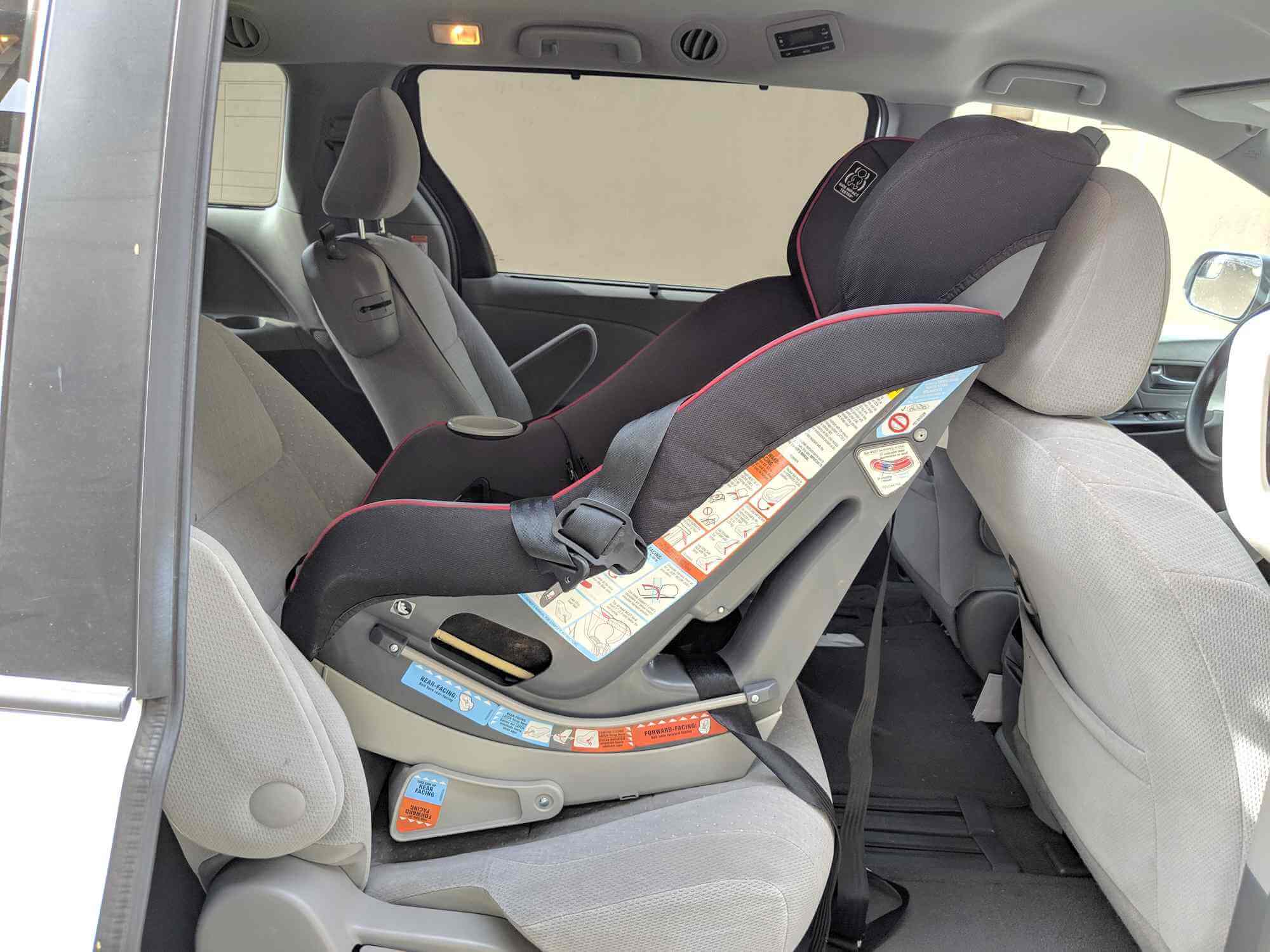
The downside, though, is literally huge. The back of a convertible is so tall that when it’s reclined in rear-facing mode for an infant, it takes up a lot of extra room. In anything but a minivan, it’s a tricky fit.
In our experience, this even makes it difficult to get convertibles to recline far enough for use with newborns. Unless your vehicle has legroom to spare, a dedicated infant car seat makes far more sense for the first year.
Once your baby is big enough to sit in a more upright rear-facing position that won’t take up all your legroom, these tall-back designs make a lot more sense. You’re usually ready for this shift when your baby is one year old, but follow manufacturer instructions about height and weight limits.
If your family is continuing to grow, separate infant, toddler and booster seats can be a good way to get the most value out of your purchases. Check out our review of forward-facing booster seats for big kids here.
How we tested
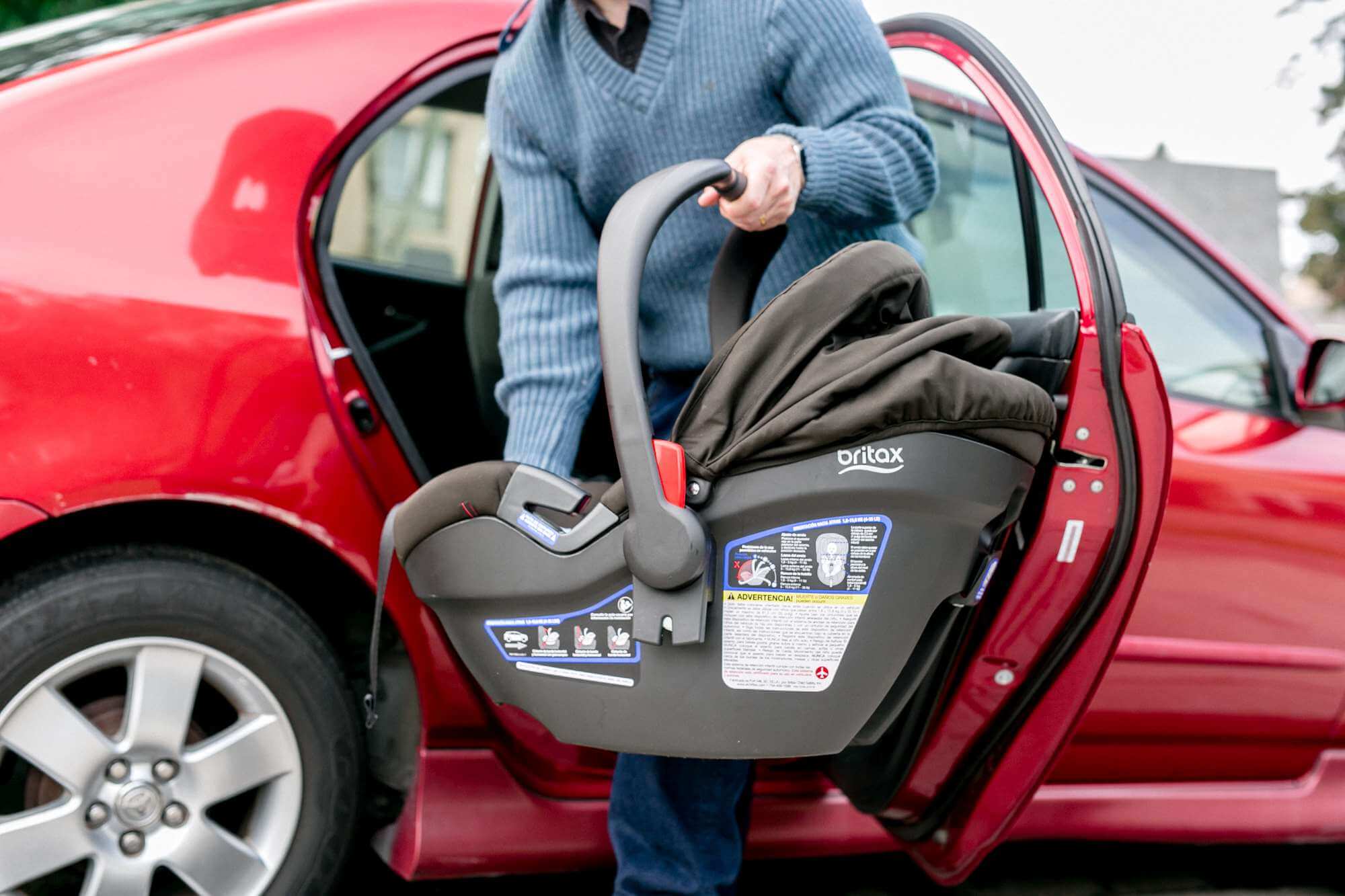
We asked a team of five moms and one dad to try out these car seats. They compared ease of installation and fit with their babies, plus we tested each of these car seats with our universally-compatible double strollers.
We installed the carriers in cars with and without bases, and our lead tester’s family used them all to carry B.J. — a chunky-monkey little newborn — during shopping trips and outings for two months.
Installation of the car seats
| Car Seat | NHTSA Ease-of-Use Rating | LATCH Tensioner Score | Euro-Style Belt Path | Length (with Base) |
|---|---|---|---|---|
| Britax - B-Safe Ultra | 24/25 | ☆☆☆☆☆ | Yes | 26.12 |
| Cybex - Aton2 | 20/25 | ☆☆☆☆ | Yes | 25.17 |
| Chicco - Keyfit 30 Zip | 19/25 | ☆☆☆☆ | No | 26.3 |
| Graco - Snuglock 30 | 18/25 | ☆ | No | 26 |
For testing, we installed car seats in four different vehicles: a compact sedan, minivan and two SUVs. Obviously, the more space between the seats, the easier installation was. The “Lower Anchors and Tethers for Children” (LATCH) system is a nearly universal standard that makes attaching seats pretty similar across vehicles.
There are some perks and quirks that differentiate each system, but our biggest takeaway is that you should get a car seat with some easy-to-use tension aid for secure installation. The Cybex is a good example, with a giant tensioning lever that makes sure the belt or latch strap is extra tight without all the knee-on-seat gymnastics you’d need to get the same results with some other systems.
In comparison, the basic strap-mounted tensioner that Graco uses on all their seats requires too much work to get tight, and even more work to remove. Our lead tester has used that system on four different infant seats and convertibles, and he’s ready for this bare-bones style of LATCH strap to just disappear.
All the car seats we checked provide a mechanism for leveling out the base when on an angled car seat, and they all provided a nearly identical degree of adjustment. Sadly, many cars have seat padding that’s even more dramatic than these systems account for and you may still find yourself adding rolled up receiving blankets, towels or pieces of pool noodle under the car seat base to help level it out.
Length and leg room
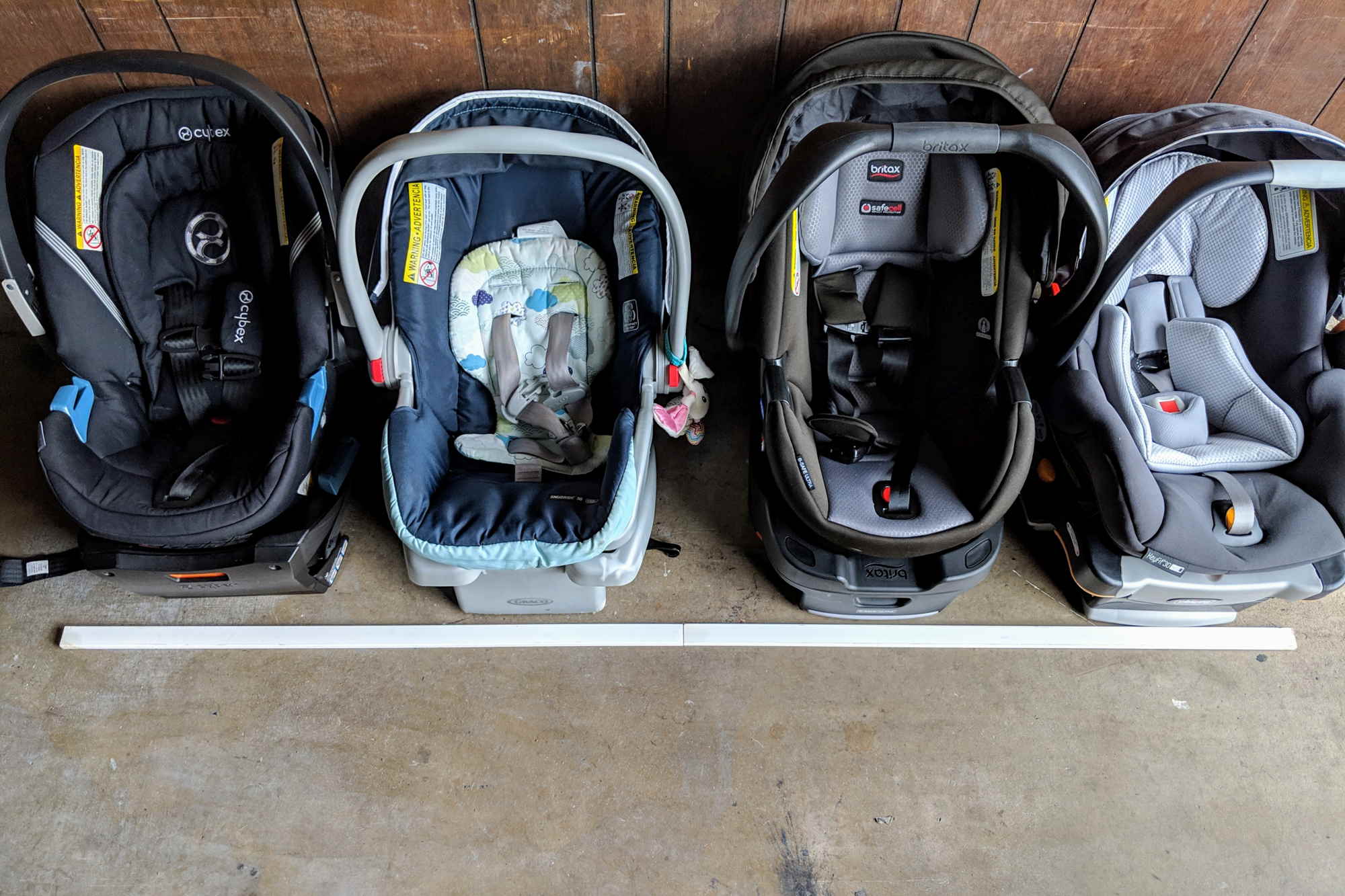
Installing a car seat in the back also often means losing some leg room in the front; about the only way to get around that is to drive a minivan. We checked the length of the seats in a few different positions, and found that the Cybex – Aton2 gives you the most space.
When resting on level ground as in the photo above, the Britax has a slight edge over the Chicco, but if you adjust the recline angle for a newborn the difference basically disappears.
Installation without a base
This is where the better seats start to distinguish themselves. Britax and Cybex both provide a “euro-style” belt path. This means that if you’re installing the car seat with a three-point retractable shoulder belt, you can actually wrap the shoulder belt around the front of the seat and use the retracting mechanism to make it more secure.
If you’re in a situation where you have the car seat and not the base, this extra level of security is a big deal. H-clip accessories (provided with the Chicco and Graco) can help make a conventional belt path more secure, but most of us will struggle holding everything in place to get the belt tight. The wrap-around installation is even more secure and much easier to do by yourself.
Fit and tension of harness
| Car Seat | Seat Back Length (Inches) | Seat Width (Inches) | Strap Adjustment |
|---|---|---|---|
| Britax B-Safe Ultra 35 | 19.6 | 7.5 | Sliding, 6 positions |
| Cybex - Aton2 | 18.4 | 8.5 | Rethread, 3 postions |
| Chicco - Keyfit 30 | 17.5 | 10.5 | Rethread, 3 postions |
| Graco - Snugride 30 | 18.5 | 10.5 | Rethread, 3 postions |
All of the models we tested except for the older Graco have a front-adjusting harnesses. On basic models like the Graco – Snugride 30, you have to adjust the fit of the harness from the underside of the seat, which is awkward at best. Graco has addressed this with a front adjustment on the Snuglock 30.
Once you move up to a quick-release tension system with an adjustment strap in the front, it’s easy to tighten and loosen the harness every time you take baby in the car. Just pull the “tail” of the harness with one hand while you check for fit with your other hand. Releasing tension to make unbuckling easier was simple for all of these systems.
The other adjustment that you’ll need to make periodically, though, is harness height. Straps should always start at a level just below your baby’s shoulders to pull them down into the bottom of the seat.
Britax is the only manufacturer we found that sells a seat with a no-rethread harness in this price bracket. When your baby hits a growth spurt, that lets you quickly and easily adjust shoulder harness height without having to take apart the seat.
Rethreading isn’t very difficult if you read the directions carefully and pay attention to which slot you’re coming from and which slot you’re moving to — but it takes time and you have to take your baby out of the carseat. Any feature that helps you keep up and stay sane is well worth considering.
Weight and age range
How do you know when your baby is too big for a car seat? This is one of the tricky parts of purchasing your car seat: you may not even know your baby’s sex when you purchase a car seat, let alone how tall they’ll be at six months of age.
Weight and height ranges are prominent in the specs for these car seats, but in almost every case you’ll find that the reason you have to stop using a carseat is that your child’s torso is too tall, regardless of how short their legs may be.
We checked the car seats for “seat back length” in the chart above by measuring along the back-board where your baby’s spine rests, from the bottom of the seat to the rim of the seat. Note that manufacturers typically consider a seat too small when your baby’s head comes up to an inch before the head comes up to the top of the back-board part of the seat.
Legs can stick out of a carseat without any issues, but if the head is within an inch of the top level of the carseat, your baby is growing up fast and ready for a bigger car seat.
The other factor to consider is the width of the cushions included. The Cybex – Aton2 has the biggest, fluffiest cushions and the second-narrowest “bucket,” which makes it the best fit for tiny babies. One of our testers, A.M., seemed entirely too small in the Graco and Chicco.
Stroller compatibility
Sadly, this is an area where combinations of strollers and car seats are either fine or not good at all.
We looked at compatibility across all the major stroller and car seat brands, and there’s a pattern: the strollers from big-name manufacturers like Britax, Graco and Chicco just don’t work with other car seat brands.
If you want compatibility with a stroller that doesn’t come from your car seat manufacturer, there are still options. A few third-party stroller manufacturers like Joovy and Contours have done a good job of providing universal fit adapters: this means you can put nearly any car seat into a cradle and strap it down securely.
Some manufacturers also provide click-in compatibility with adapters for a wide range of brand compatibility. It’s not free, but it gives you all the convenience of a made-to-fit travel system. One of the top picks in our review of the best double strollers, the Contours – Options Elite, makes adapters to fit all major car seats.
Top pick: Britax – B-Safe Ultra
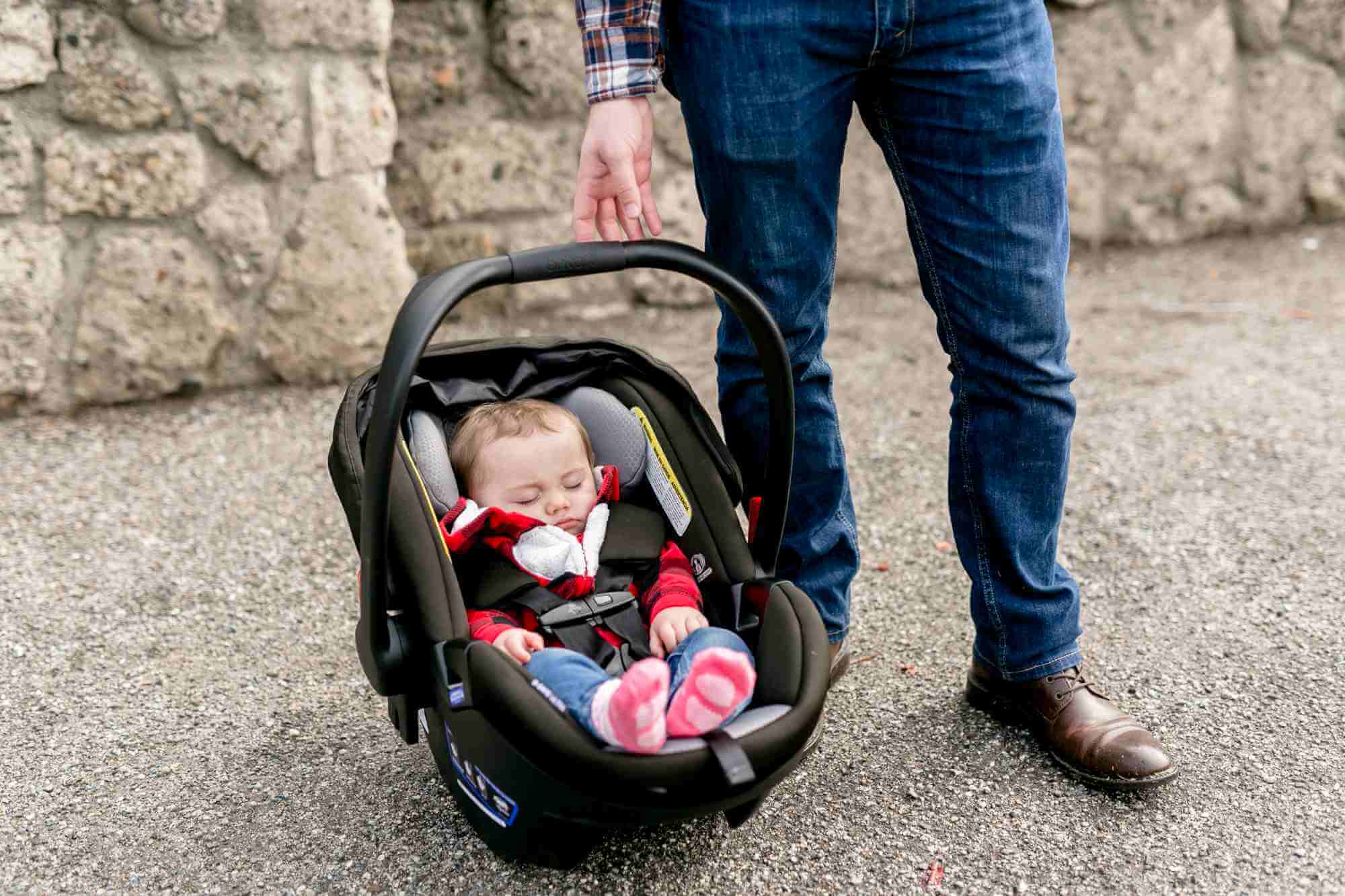
Picking a winner from this group of award-winning car seats was actually easier than we thought it would be. After comparing all of the features and using the car seats, our testers nearly all said the Britax – B-Safe Ultra is the car seat they’d choose to take home.
The Britax is a bit bigger than the others we tested. At 11.5 pounds, it’s the heaviest, and at 26.5 inches it’s the longest carrier front to back. We didn’t have trouble fitting it in our tester’s Corolla, though, even in a side seat behind the driver. Yes, there was more leg room with the Cybex, but when it’s in the base the Britax is slightly shorter than the Chicco despite giving more room to grow.
The Britax seat is also the deepest when measured from the bottom to top where your baby’s back will rest, so there’s more room to grow before you need to move up to a bigger seat.
Installing the B-Safe base is a breeze. Coming from three years of using various Graco seats with fiddly strap-mounted tensioners, one tester admired the way Britax lets you pull on two independant LATCH straps directly. This gives a little bit more control and feedback than tying them together in a single pull-strap, like Chicco does, or forcing you to rely on a lever, as Cybex does.
The NHTSA rates this a 24 out of 25 for ease of use — and an easy-to-use car seat is a safe car seat. Labels are clear, instructions are well-written, and the important installation and adjustment components are color coded and easy to use.
Top Pick: Britax - B-Safe Ultra
Britax pulled out all the stops with this upgraded model. The B-Safe Ultra has easier strap adjustment, better options for temporary installation in Grandma's car or an Uber, and a great look and feel. This isn't a compact or lightweight car seat, but it's top-rated for easy installation and adjustment.
Britax provides two key features on this model that are still rare at this competitive price point.
The first is an adjustable-height harness system. Instead of taking your car seat apart after every growth spurt, you can just slide the adjuster up and down to one of six positions. No complicated buckles, no forgetting to thread the straps through the head rest pad, no excuses. The Britax is the only car seat we found in this price bracket with a no-rethread harness.
The second distinct feature is the European-style belt path for installing without the base. If you only ever use your car seat in one car, maybe you’ll never use this feature. But that one time your spouse leaves you at home to spend the afternoon with Grandma and the base is still in the minivan, you’ll be thankful for the option.
There are other safe ways to install a car seat without a base (always check the manufacturer’s instructions to see your options). But wrapping the shoulder belt around the front of a car carrier is so much quicker, easier and more secure it’s hard to believe this isn’t a standard feature for every car seat.
Both of these features are missing from the base-model B-Safe 35, and the better seat belt path option is still missing on the Elite, so we’d definitely recommend spending the $30 or so to upgrade to the Ultra.
The padding inside this top model of the B-Safe line is plush and smooth. In our tests, we didn’t have any difficulty wiping off spit-up and snacks, but it’s also easy to remove the cover for washing. We liked the shoulder strap pads better than most, since they don’t have exposed snaps, seams or velcro to leave an impression on baby’s neck.
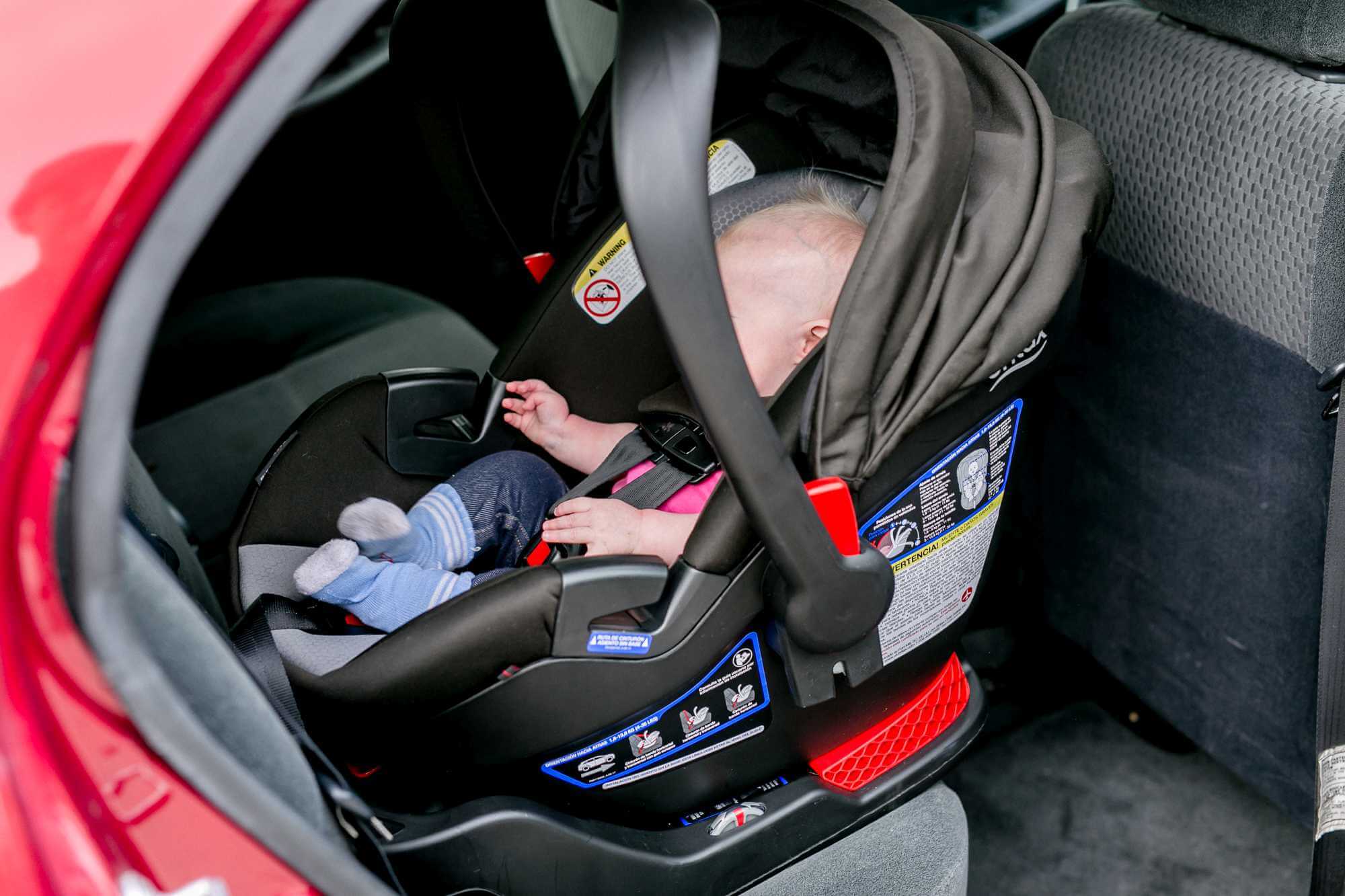
The flip-up sun shade feels just a little bit more luxurious, and it offers better coverage than any other shade except Chicco’s zip-on accessory extension.
If you want a little bit more in the way of safety-conscious design, the Britax – Endeavours is the same as the B-Safe, but the base has an anti-rebound bar bolted on for about $60. (Yes, it’s literally the same base with an added part. No, you can’t buy the bar separately.)
Key takeaways:
- The Britax – B Safe Ultra packs in nearly every convenience feature for a reasonable price.
- With no-rethread adjustment, you have no excuse not to keep shoulder straps at the correct level as your baby grows.
- This base is easy to install: the carrier connects and disconnects easily.
- A European-style shoulder belt path makes this carrier easier to install securely, even without the base.
- The sun visor provides ample shade.
- This is a bigger, heavier car seat, which is a good thing for safety.
- Gets a near-perfect score for ease of use from the NHTSA and from our testers.
Best for small cars: Cybex – Aton2
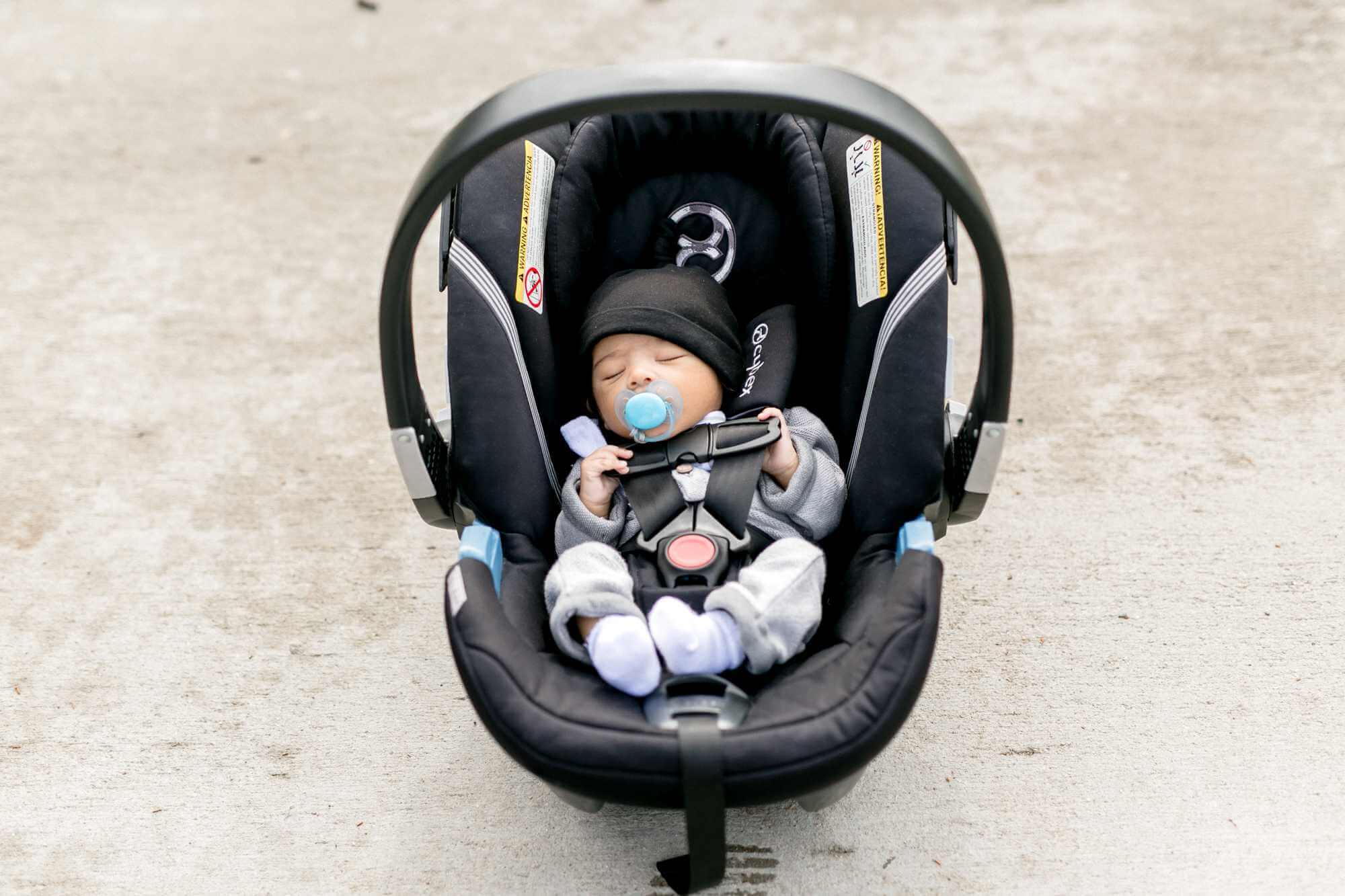
For something a little different, we looked to the Cybex – Aton2. This dark horse contender comes from Germany, and it comes with distinctive features that set it apart. It wasn’t the most convenient to use every day, so it narrowly missed top spot, but it’s still a car seat we like.
Let’s talk about how compact this car seat is: at just less than nine pounds, it’s not the lightest seat we tested, but it’s close. It’s definitely the easiest to fit in a compact car, though, with a design that maximizes the amount of space you have between seats.
The Aton line also has a base that’s easy to install, with a large flip-up lever that presses down on your LATCH straps to suck the base tight into your seat. You can get the same effect by pushing down on a base and pulling hard, but some people will prefer this mechanical advantage. The NHTSA gave this car seat full marks for installation.
Extra safety features
Cybex includes two features that are rarely seen in the U.S. market at any price. The first is a “load leg” feature that sticks out from the base. This leg is designed to absorb forward inertia in case of a head-on crash. The LATCH tethers will do a great job of preventing a car seat from flying forward, but as the seat cushion underneath compresses there’s still room for momentum to rock the seat forward, then rebound.
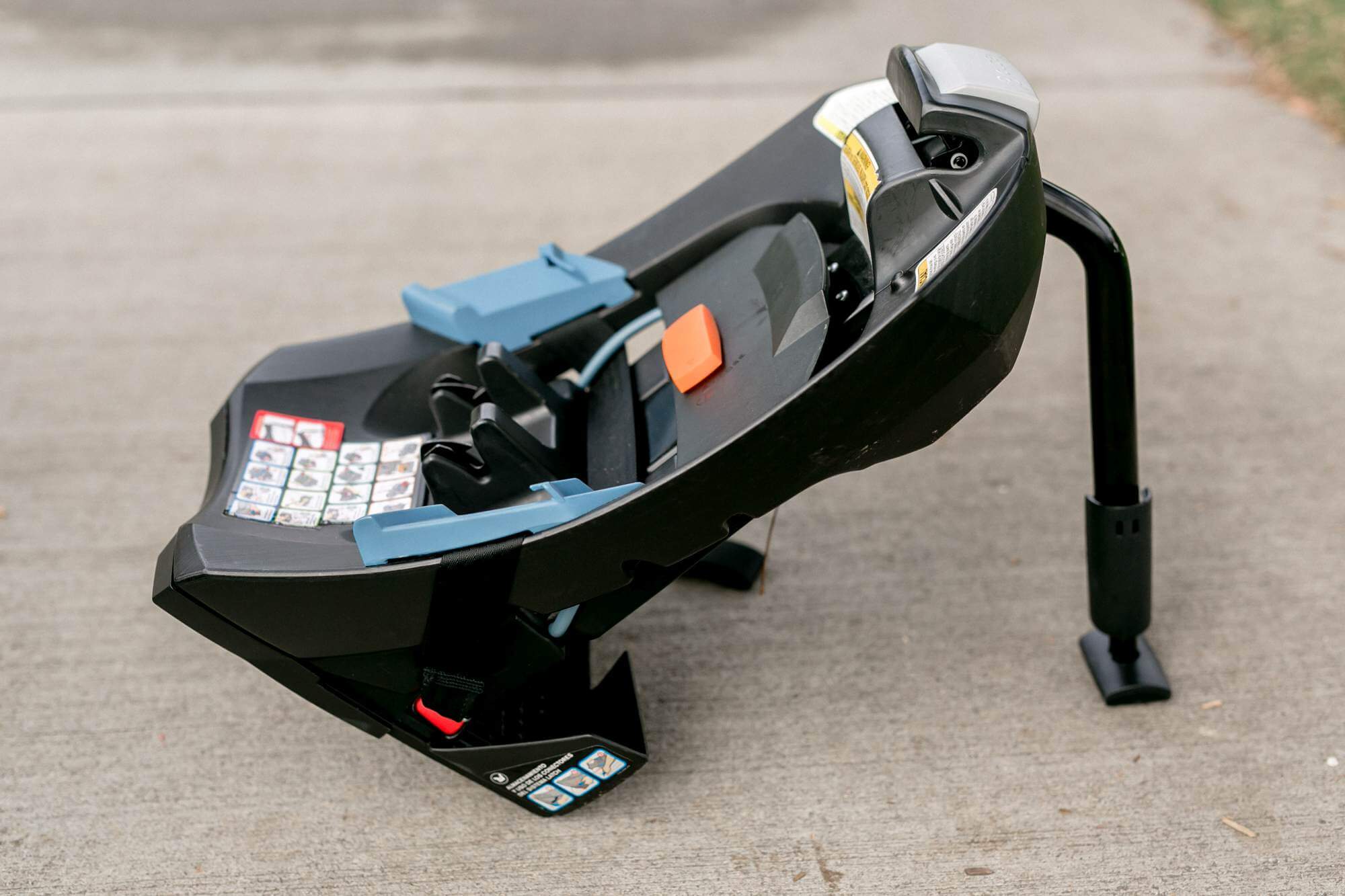
The other unique feature is a “linear side-impact protection” (LSP) system. These are two plastic wings that snap out, only for use when you install the Cybex in a side position next to a door or panel — never when seated beside a person or another car seat. The LSP is designed to absorb side impact energy which would otherwise cause the seat to bounce off the car door or other side panel.
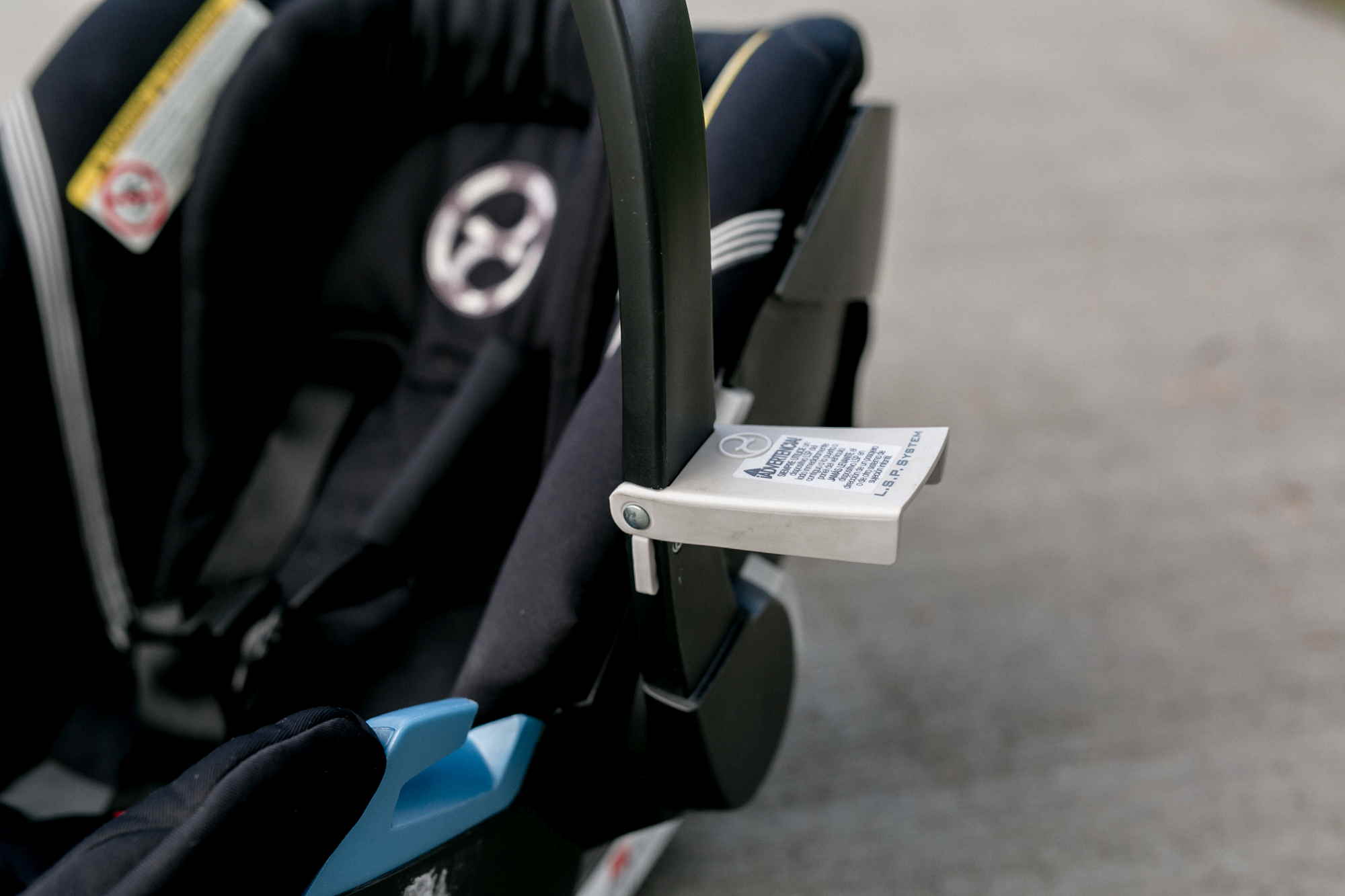
Videos of European crash tests like this one are pretty convincing. That said, you can still have a safe car seat without these features and U.S. safety agencies aren’t currently testing them: The Cybex is tested and approved with these two features folded in, and U.S. standards don’t currently test side impacts.
Also best for smaller babies
The Cybex – Aton2 is also slightly better for the tiny infants like A.M. who get lost in bigger car seats. The seat bottom was the second-narrowest we tested and has a nice fluffy insert to help keep baby in place.
Cybex also gives you a “newborn insert” that fills in some space in the bottom of the seat. This helps the harness fit small infants better and makes the angle of your baby’s body a little bit flatter to help out baby’s developing neck.
You should never deliberately recline a seat past the level indicator on the base since that changes the way the harness and seat can absorb weight in case of a crash. This car seat was designed with the newborn insert in mind, so you can rest easy.
The drawbacks
There were a few things that kept this car seat from taking top spot.The mechanism that keeps this car seat locked in the base is a bit tricky to work with. There’s a two-step removal procedure, where you have to lift the foot end of the carrier out of the base before the head latch will unlock. It isn’t that hard to repeat once you learn the feel of it, but four of our testers said it was a deal-breaker after seeing a demonstration.
The harness on the Aton2 requires you to re-thread the shoulder straps as your baby grows. That’s not unusual, especially at this price point, but the fact that the Britax manages to provide a non-rethread harness at a similar price is a real bonus.
Best for Small Cars and Small Babies: Cybex - Aton2
Cybex is one of the few companies bringing the latest European design features stateside. You don't need all these extra features to have a safe car seat, but it sure can't hurt. The infant insert is also great for smaller babies and this takes up less of your front row legroom than any other seat available in the U.S.
Also, the sun visor on the Cybex is fairly small and doesn’t extend far enough to prevent low-angle sunset glare when used in a stroller. This isn’t a dealbreaker, and many parents will use a blanket or stroller canopy when the carrier isn’t in the car, but it’s annoying that you can’t get just a few more degrees of rotation out of the shade.
All things considered, this is a quirky little car seat that has a lot to offer at a competitive price. If you can afford to spend a little more, the Aton Q adds a bigger sun canopy and non-rethread harness adjustment, but the tricky carrier release latch is still the same. The Aton2 is a great car seat for those with small cars, small babies, or who want the peace of mind that comes with buying the latest safety features.
Key takeaways:
- If you’re looking for cutting-edge safety features, the Cybex – Aton2 has extra protection at a reasonable price.
- This is also the best fit for cars without legroom to spare.
- The base is easy to install with a nifty strap-tensioning lever system.
- Sadly, you’ll still have to re-thread the shoulder harness as baby grows.
- An infant insert may help smaller babies ride more comfortably.
- This is also one of the lighter car seats we found, less than nine pounds.
Other finalists we tested
Chicco – Keyfit 30 Zip
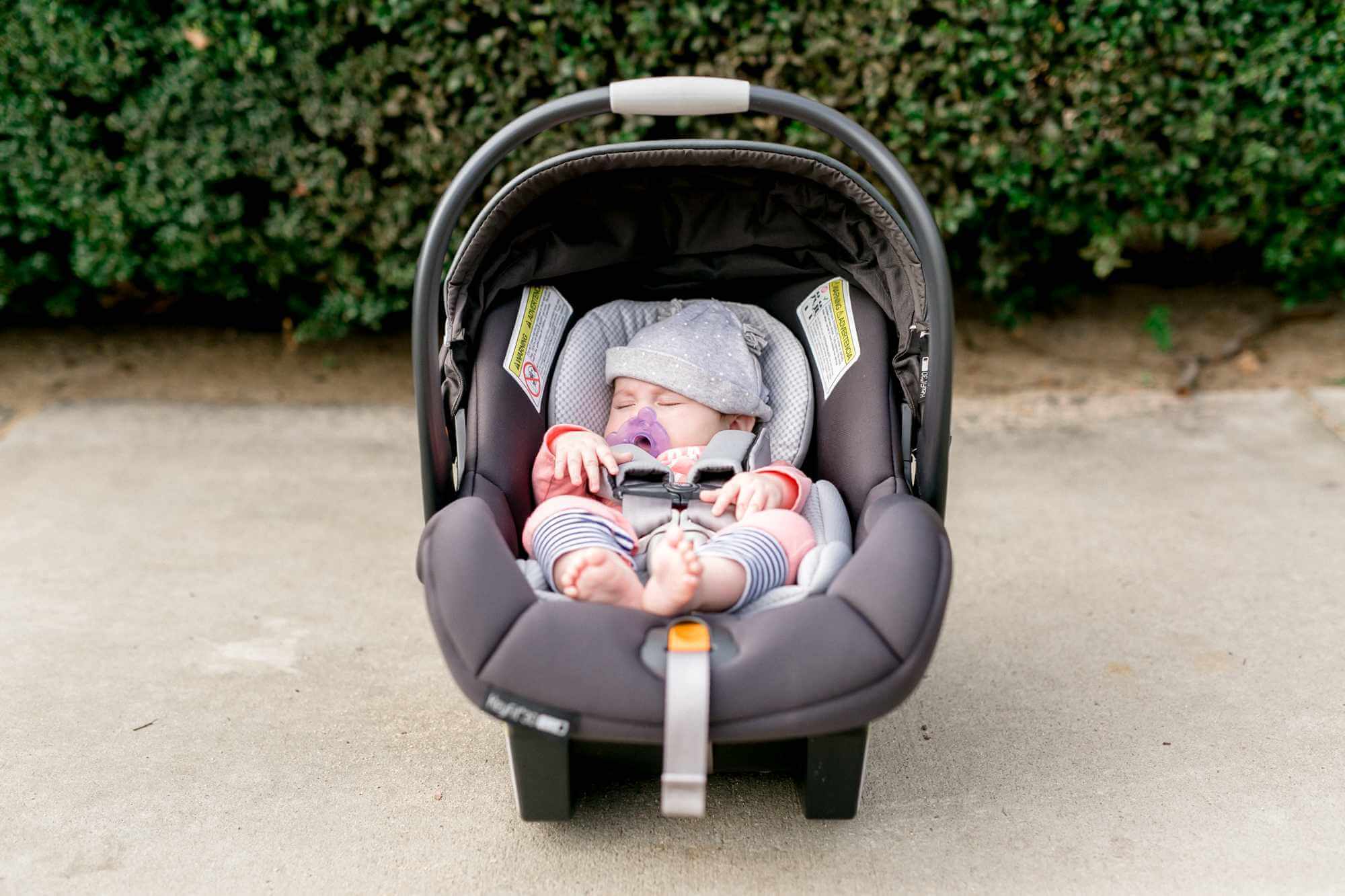
Chicco’s car seats are great and the KeyFit 30 Zip is no exception. We don’t want the ranking in this review to be overstated: if it weren’t for a few features that made other car seats easier to use in specific cases, this car seat would have been very close to the top pick.
The biggest point holding back the Chicco from ranking higher is the lack of a better option for seat belt routing when you don’t have the base with you. The fact that you get the European-standard belt-path feature along with a no-rethread harness adjustment on the Britax makes it just that much better.
The Chicco is the shallowest seat we measured measured along the back-board part of the seat, with 17.5 inches of room for your baby’s torso to grow compared to Britax’s 19.6.
Many reviewers give this car seat top marks, but all of our testers preferred the installation and safety features of other seats. The NHTSA rates this car seat a 19 out of 25, docking points for label clarity and the harness system.
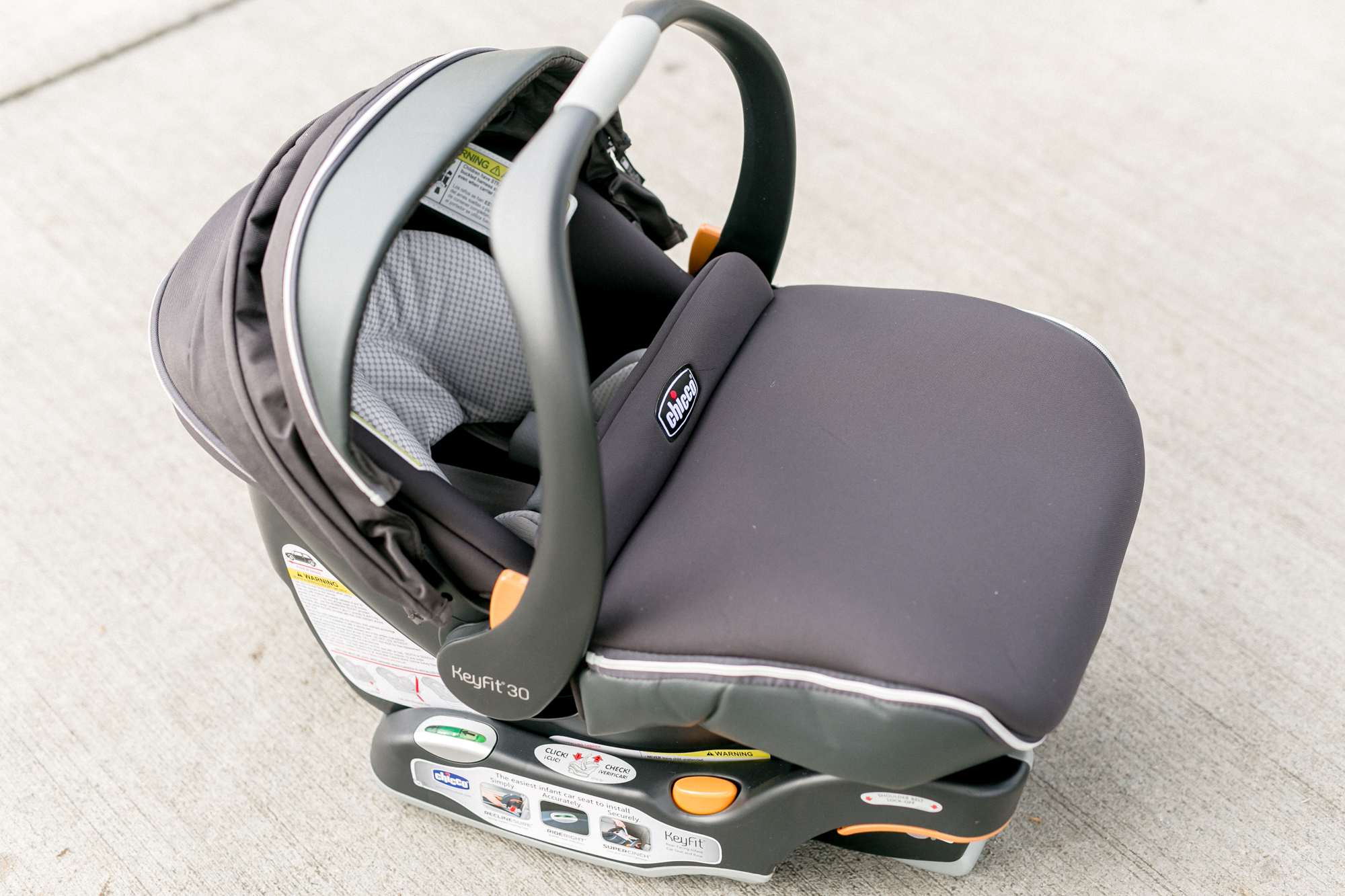
We tested the upgraded Zip model so we could see what the premium features are like to use, and the additional foot cover and visor extension are nice to have on chilly days. If you’re just going to buy some other privacy or cold-weather cover, there’s not much reason to spend extra on this upgrade, but child passenger safety technicians will give you bonus points for sticking with factory-designed accessories that have been fully tested.
Graco – Snuglock 30
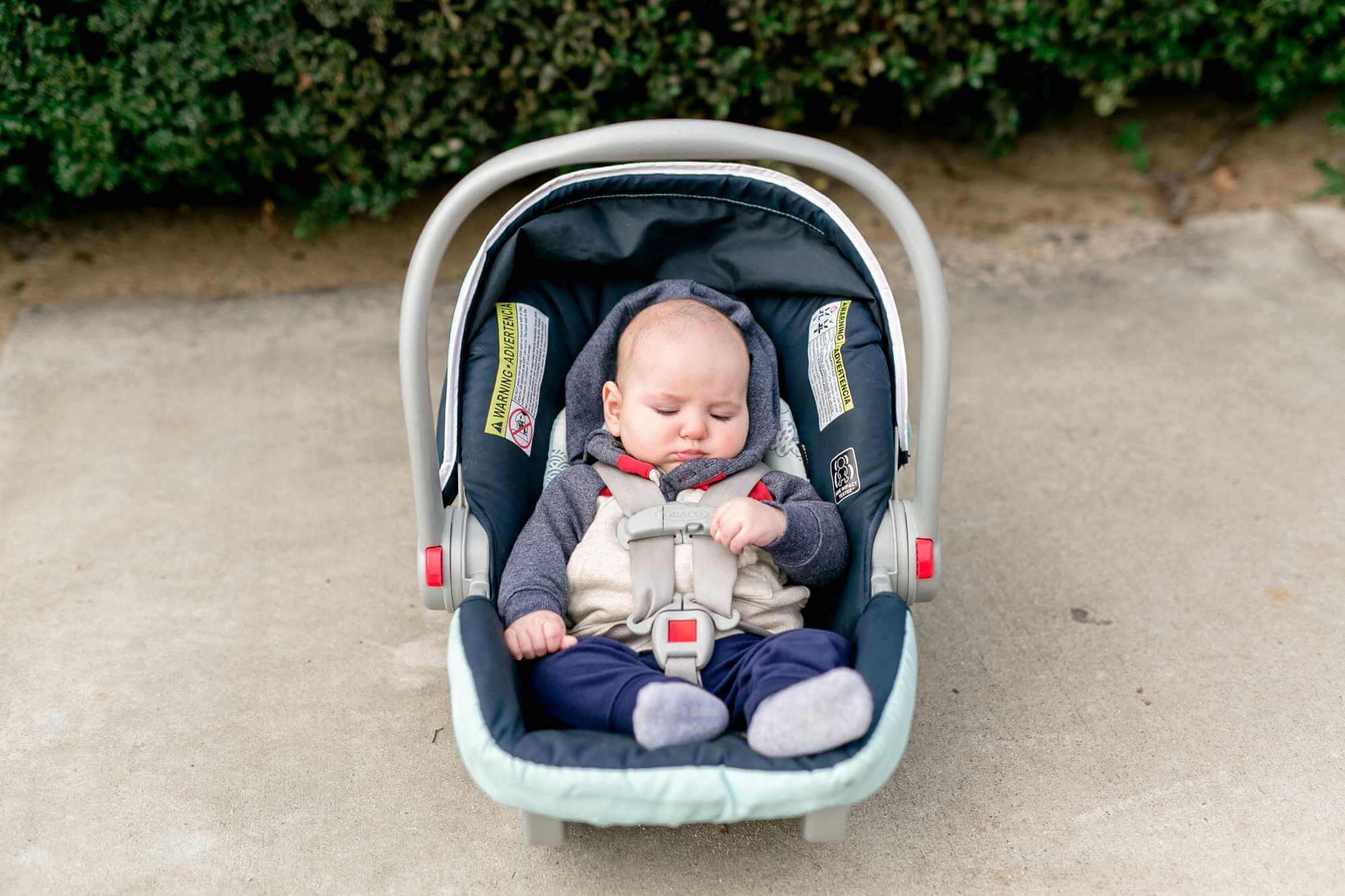
The Graco – Snuglock 30 is a budget-friendly, lightweight car seat that will keep your baby safe. This is a minor update of the seat our lead tester had been using for his two children and there’s really nothing about this car seat that was missed. The extra couple of pounds you’ll have to carry with a Cybex are well worth it when it comes to plush materials, easy installation and other quality-of-life improvements.
The bottom line
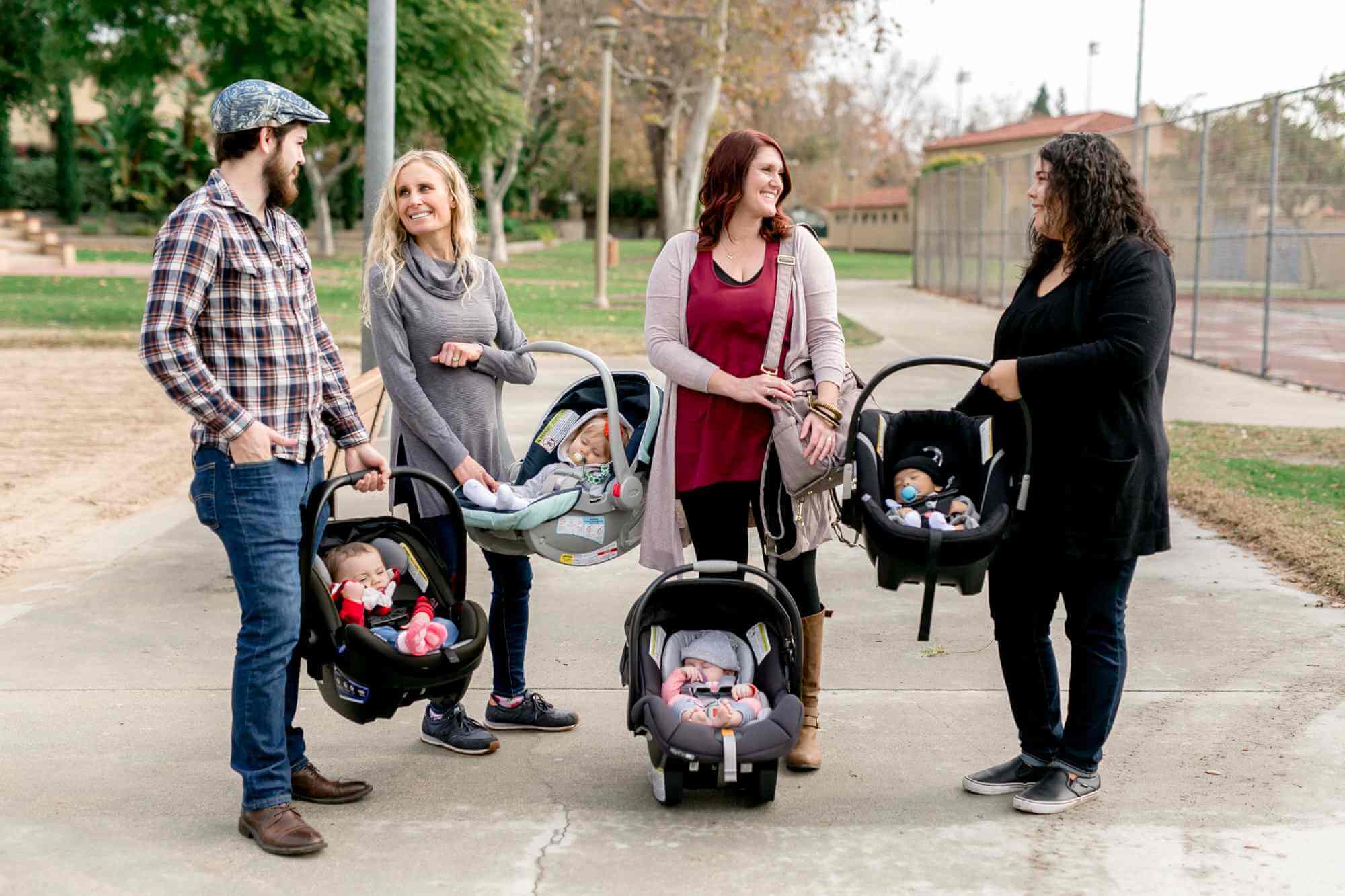
Buying a car seat is intimidating. It’s hard to know which features are most important and which features are going to come in handy unexpectedly. When you’re buying, you probably don’t even know how big your baby will be yet.
Five out of our six testers picked the Britax – B-Safe Ultra as their favorite car seat. Britax brings features you’d usually only see on $300 or $400 car seats down to an affordable price, and it’s one of the easiest seats to work with.
For a runner-up, we also like the Cybex – Aton2. This seat doesn’t have all the convenience features of the Britax, but it makes up for it with two innovative crash-protection features that are rarely seen in the U.S. car seat market. Cybex also made their car seat light and compact, which could be a real plus for those with small cars to squeeze in and out of. The Aton2 base takes some practice to get used to, but if you want these features it might be worth the learning curve.
More Reviews
The Best Soaps for Sensitive Skin
CeraVe - Hydrating Body Wash
Parent's Choice
The Best Digital Thermometers for Babies and Kids
iProven - DMT-511
JuJuBe - B.F.F.
Contours - Options Elite
LÍLLÉbaby - Complete All Seasons
Infant Optics - DXR-8
Nuk - Magic 360
The 7 Best White Noise Machines
ASTI - 'LectroFan
Honeywell - HEV620


